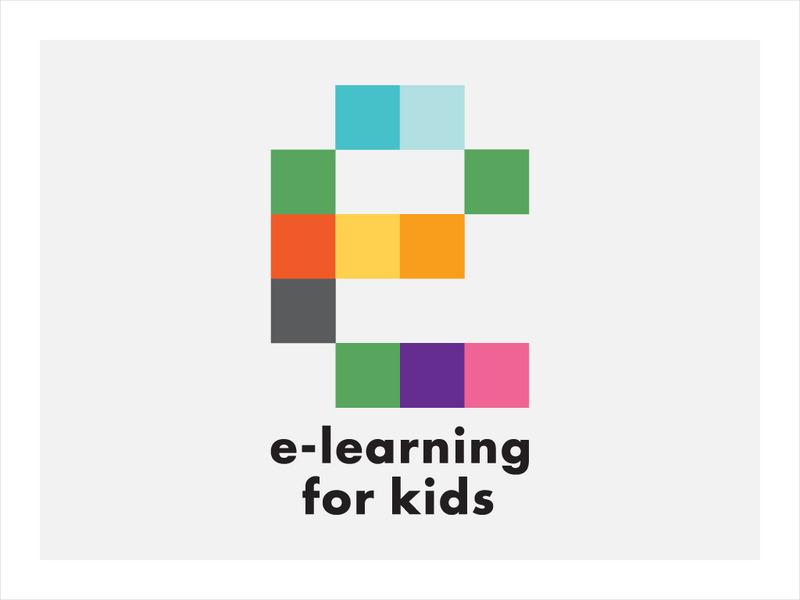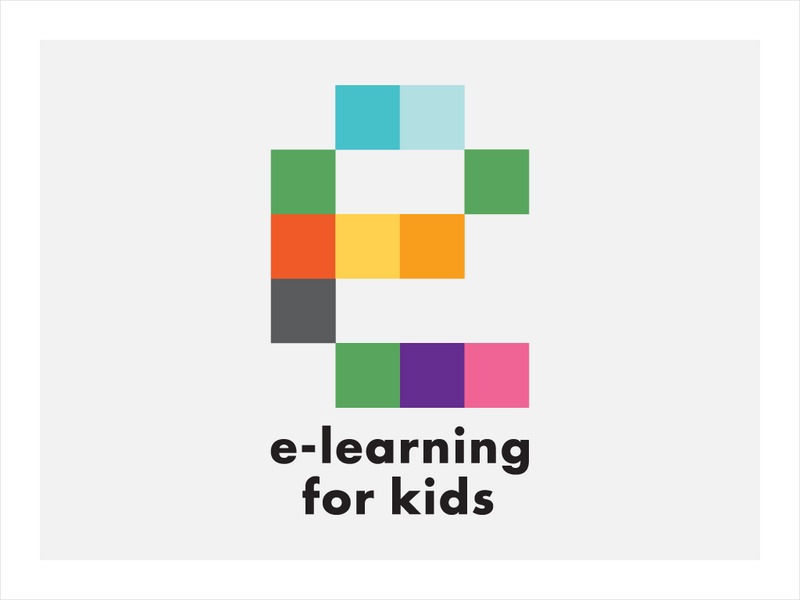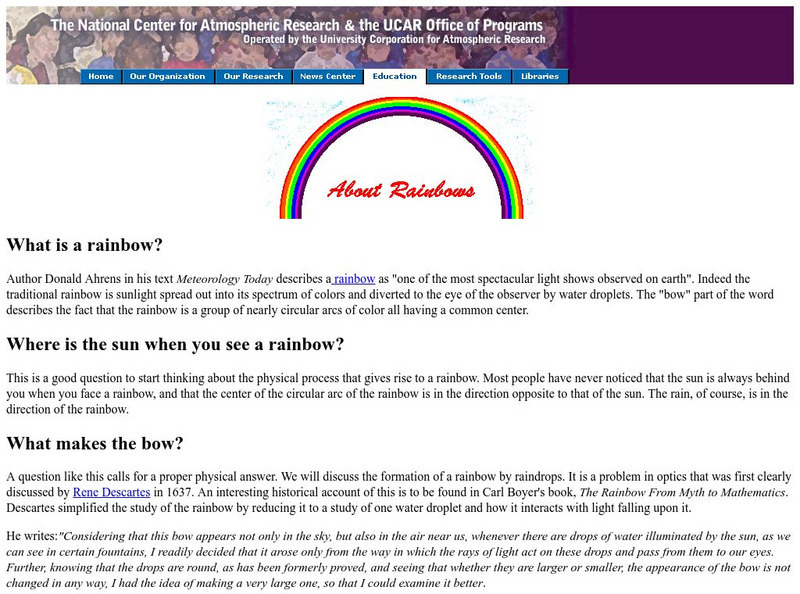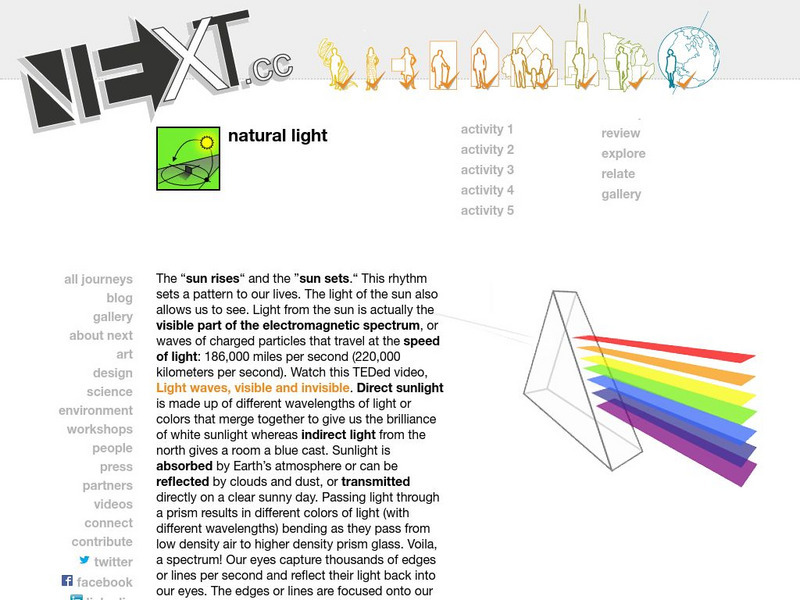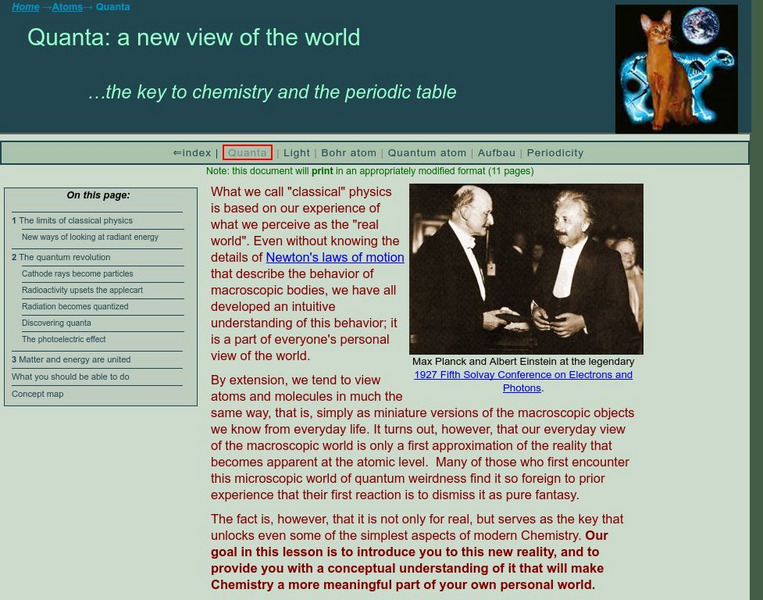NASA
Nasa: Space Place: The Electromagnetic Spectrum
Find out how energy, frequency, and wavelength are related in terms of the electromagnetic spectrum.
NASA
Rxte Learning Center: Frequency, Wave Length, and Energy Activity
Resource focuses on the relationship between the frequency, wavelength and speed of light. Has a link to an interactive activity relating frequency, wavelength, and energy.
E-learning for Kids
E Learning for Kids: Science: Netherlands: How Does Light Travel?
Sara and Finn are finding out how light travels. Join them, and learn the nature of light energy.
E-learning for Kids
E Learning for Kids: Science: Scotland: How Are Shadows Formed?
Join James, as he tries to make a dog appear on the wall by using only his hands. Find out how he does this.
E-learning for Kids
E Learning for Kids: Science: Scotland: Why Do Shadows Change During the Day?
William is a Scottish boy who is learning about the sun and how it casts shadows. Try to help him find out.
PBS
Pbs Learning Media: A Bright Idea
A Bright Idea shows several different power sources and asks students to write about friction, electricity, combustion or light.
University Corporation for Atmospheric Research
Ucar: About Rainbows
This site from the University Corporation of Atmospheric Research provides an illustrated article about the phenomenon of rainbows.
University of Maryland
Optics Highlights: The Microscope
Part of an anecdotal history of optics and the study of light. Extremely thorough treatment of the scientific findings and developments which led to the invention and refinement of the microscope. Includes a short biographical sketch and...
Wolfram Research
Wolfram Science World: Maxwell, James
This ScienceWorld site describes the Scottish mathematician and physicist James Maxwell (1831-1879) who published physical and mathematical theories of the electromagnetic field.
University of Kentucky
Virtual Workshop: The Light Course
On line course on light for graduate credit or professional development, that emphasizes handson activities you can use in your classroom.
American Museum of Natural History
American Museum of Natural History: O Logy: Light, Matter, Energy
Learn how Einstein revolutionized how we think about light, matter, and energy by asking challenging questions and questioning old ideas.
American Museum of Natural History
American Museum of Natural History: O Logy: Stuff to Do: Light Quest
Light Quest activity, for two to four players, designed to explain how atoms create light and where photons come from.
University of Illinois
University of Illinois Urbana Champaign: Light and Optics
Rainbows and sunsets are called "atmospheric optics". They can be caused by light being absorbed, reflected, scattered, refracted, or diffracted by particles in the atmosphere. Learn all about different atmospheric optics along with...
University of Colorado
University of Colorado: Physics 2000: Einstein's Legacy: Microwave Ovens
A series of pages that explain how microwave radiation is utilized by ovens to cook food. Includes several Java applets.
Next.cc
Next: Artificial Light
Multiple activities help students gain a better understanding of light bulbs and the many uses of artificial light. Click on the links provided for further exploration.
Next.cc
Next: Natural Light
Learn why natural light is and why it is important by completing these five activities. Click on one of the many links provided for further information.
Science Education Resource Center at Carleton College
Serc: Characteristics of Light: Light Travels in a Straight Line
In this lab experience, the students will be asked questions about characteristics of light and sound and whether these energy sources travel in straight lines. The teacher briefly demonstrates light and sound travel. Students will...
Science Education Resource Center at Carleton College
Serc: Investigating Light Properties
Students will investigate how light travels and what it does when it hits an object. Light sources will be used to represent a beam of light. Students will direct the beam toward various objects and materials. Through observations...
Science Education Resource Center at Carleton College
Serc: Investigating Light: A Form of Energy You Can See
Learners will investigate how light is a form of energy that travels as waves away from the source. The basis for this instructional activity is taken from the Houghton Mifflin science curriculum. In the instructional activity...
TryEngineering
Try Engineering: Telescoping Periscope
Working in teams of "engineers", students explore how a periscope works and is used. They design, build, and test a working periscope made from everyday materials that has adjustable mirrors and be able to telescope as well.
TryEngineering
Try Engineering: Infrared Investigations
Engineers use infrared technology to develop equipment and systems for a variety of industries. Teams of learners are challenged to test the limitations of infrared in a basic television remote control to conceive a way to point infrared...
TryEngineering
Try Engineering: Solar Structures
During this lesson, students will construct a passive solar house from everyday items then explore how the sun's energy is used to heat and cool it.
TryEngineering
Try Engineering: Here Comes the Sun
Students work in teams to learn about solar panel design, simple circuits, and how solar energy is used to provide power to simple machines such as calculators.
Simon Fraser University
Chem1 Virtual Textbook: The Limits of Classical Physics
Acting as a subtopic of the General Chemistry Virtual Textbook's section on Atoms and the Periodic Table, this site discusses the limits associated with classical physics. Topics covered include light and heat with additional information...


